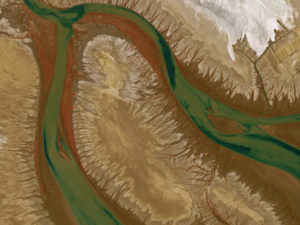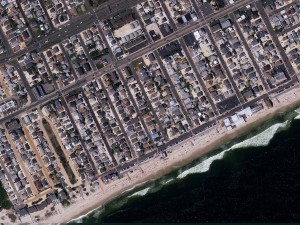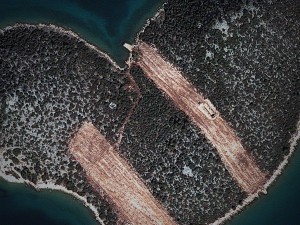
Myrna James Yoo
Publisher and
Managing Editor
Apogeo Spatial
and LBx Journal
Owner
Blueline Publishing LLC
With the re-launch of Imaging Notes as Apogeo Spatial over a year ago, we recommitted to communicating with you how geospatial data and tools are critical to solving some of the world’s biggest, interconnected problems, related to the Earth’s changes, for long-term sustainability. The American Geophysical Union (AGU), and companies such as DigitalGlobe, have similar missions. DigitalGlobe is “seeing a better world.” The AGU “galvanizes a community of Earth and space scientists that collaboratively advance and communicate science and its power to ensure a sustainable future.”
In June, I attended the AGU’s Science and Policy meeting, which emphasized the continued need for policymakers to understand the importance of Earth science. The AGU Presidential Citations for Science & Society were awarded to Sen. Barbara Mikulski (D-Md.), chairwoman of the Senate Appropriations Committee; Dr. Eugenie Scott, former Executive Director for the National Center for Science Education; and Dr. Naomi Oreskes, a science historian who uses reason to fight climate change denial, and co-author of the ground-breaking book, Merchants of Doubt, which looks at how the tobacco industry attempted to cast doubt on the link between smoking and lung cancer, comparing it to those who would cast doubt on climate scientists.
Dr. Oreskes is a professor at Harvard University. In her 2004 paper published in Science, “Beyond the Ivory Tower: The Scientific Consensus on Climate Change,” Oreskes analyzed nearly 1,000 scientific journals to directly assess the magnitude of scientific consensus around anthropogenic climate change. 97% of scientists agree that humans are causing climate change, yet only 41% of the public agrees. Only one in 10 Americans realize that there is 97% agreement among scientists. It is time to realize that the responsibility of the press to “tell both sides of the story” is only relevant when there are two sides. In this case, there are not.
On the same note of policymakers understanding the importance of Earth science, the newly released “Earth Observations Priorities 2014” is summarized in this article here, noting that Earth observations are essential in solving many global problems. Download the full report at http://strategies.org/environmental-information/ alliance-for-earth-observations/.
Our regular column, “On the Edge” also addresses the importance of Earth science in studying climate change. The author, Hans-Peter Plag, PhD, has just formed the Mitigation and Adaptation Research Institute at Old Dominion University (www.mari.odu.edu). The Credibility of Science article here.
The current administration is making progress, releasing the first ever U.S. National Climate Assessment in May 2014. In addition, The White House Climate Data Initiative was announced in March, and Esri and Microsoft (among others) are providing technology and expertise. They are creating portals for communities and citizens to access and use the expansive data from NOAA and USGS, on www.climate.data.gov, and www.resilience.maps.arcgis.com/home.
In order to better predict severe weather, flooding and drought, PlanetiQ is launching commercial weather satellites. CEO Anne Hale Miglarese shares in the article why this makes sense for the federal government and other customers. All eyes are on the potential weather data gap, which could occur anytime, most likely in 2017.
In the article Student Awards, we recognize the next generation of remote sensing leaders, the winners of the DigitalGlobe Foundation Scholarship, who are at the university level, and the Thacher Environmental Research Awards, who are high school students.
Also, our sister publication LBx Journal is continuing our weekly enewsletter of the best news from around the Web related to location in the language of business, with LBx LITE: Business Game Changer (location information, technology and economics). Opt in, or add your email to the list at www.lbxjournal.com.



